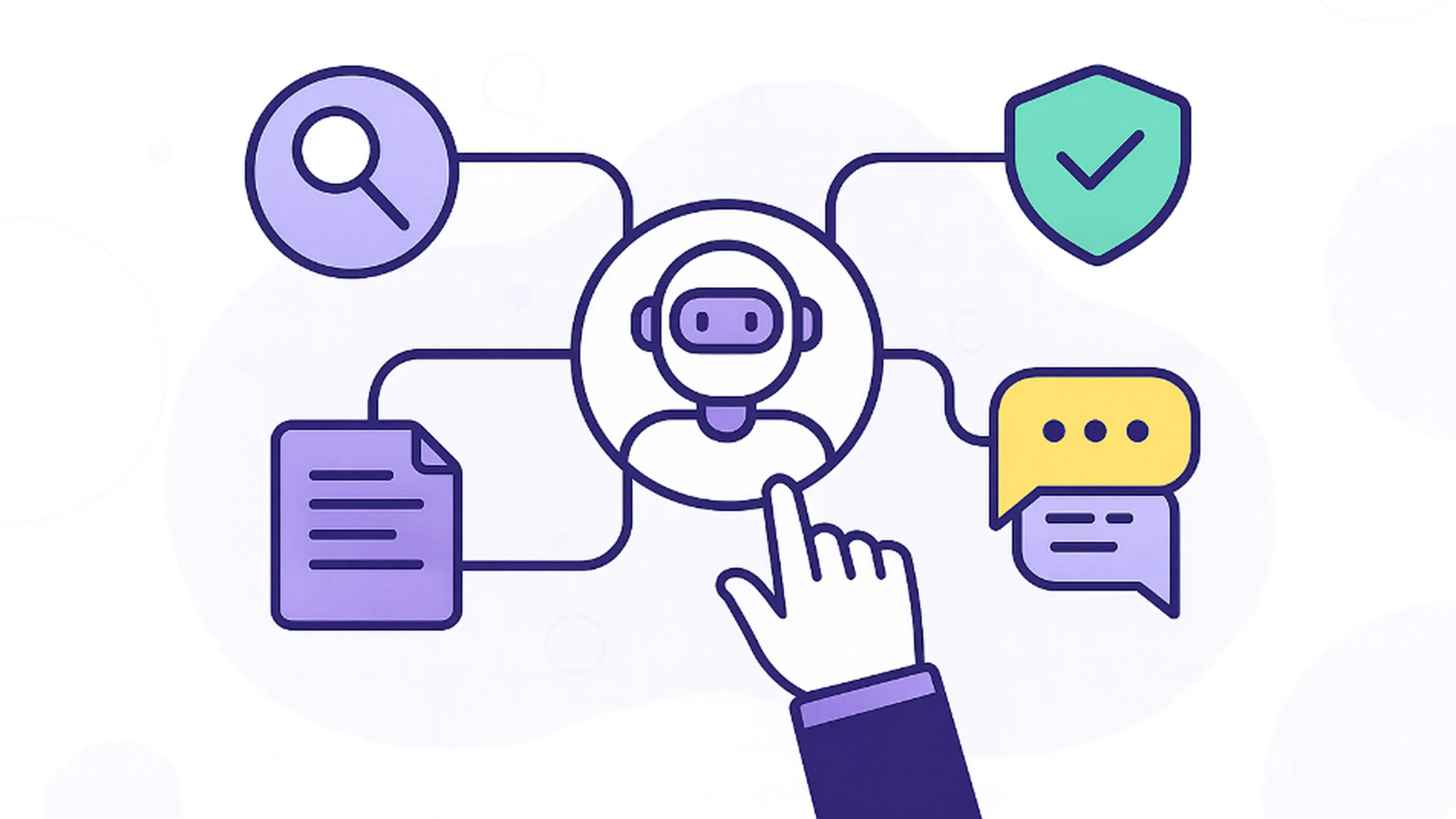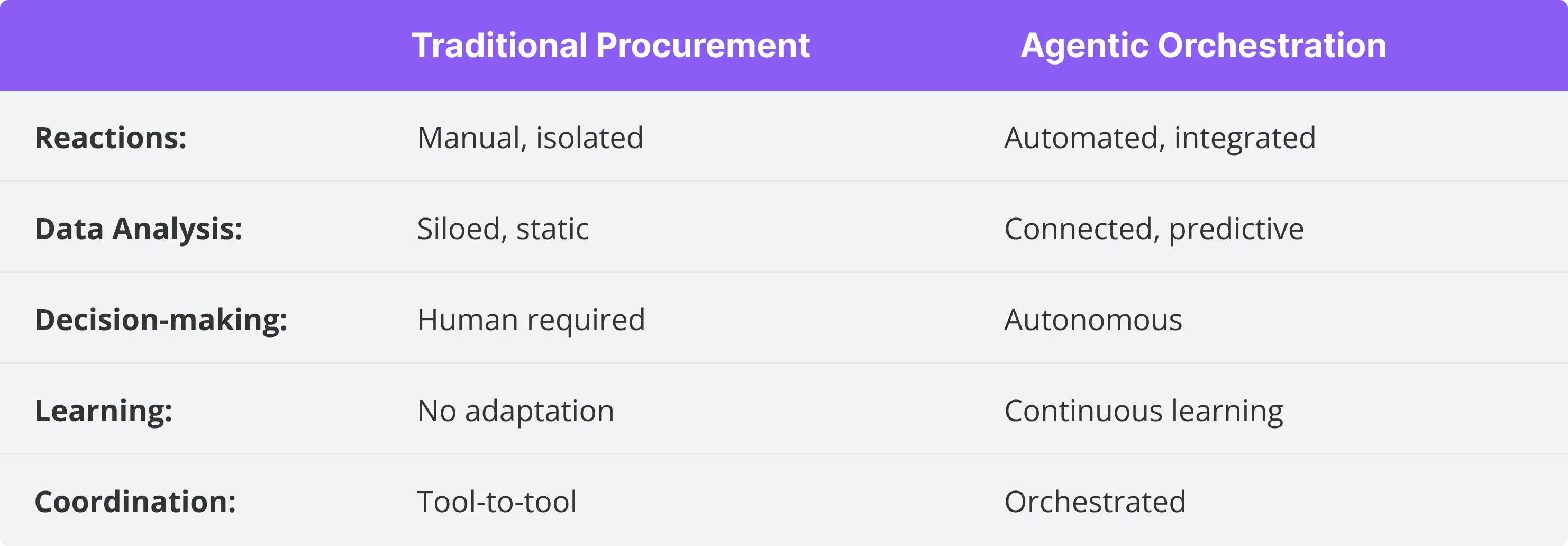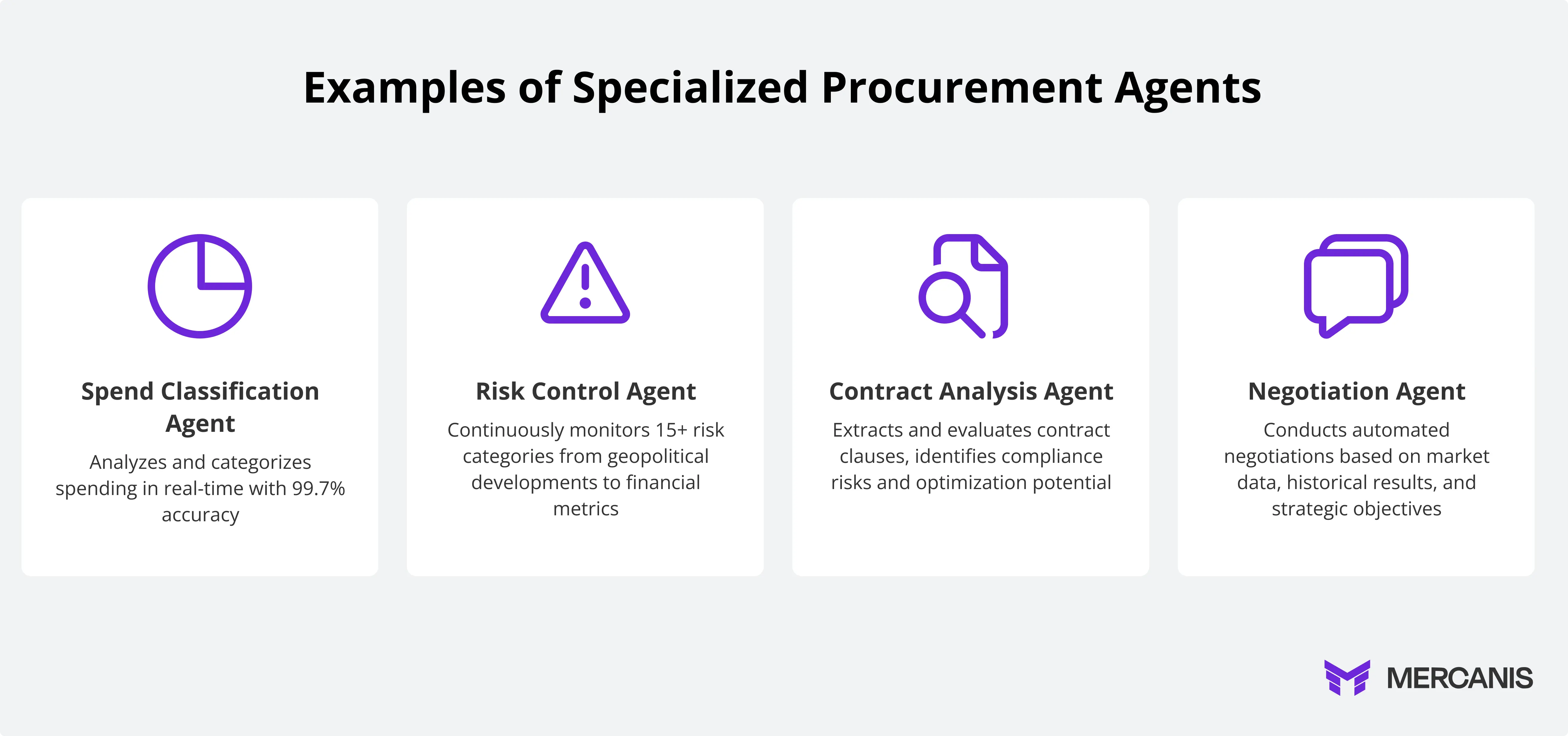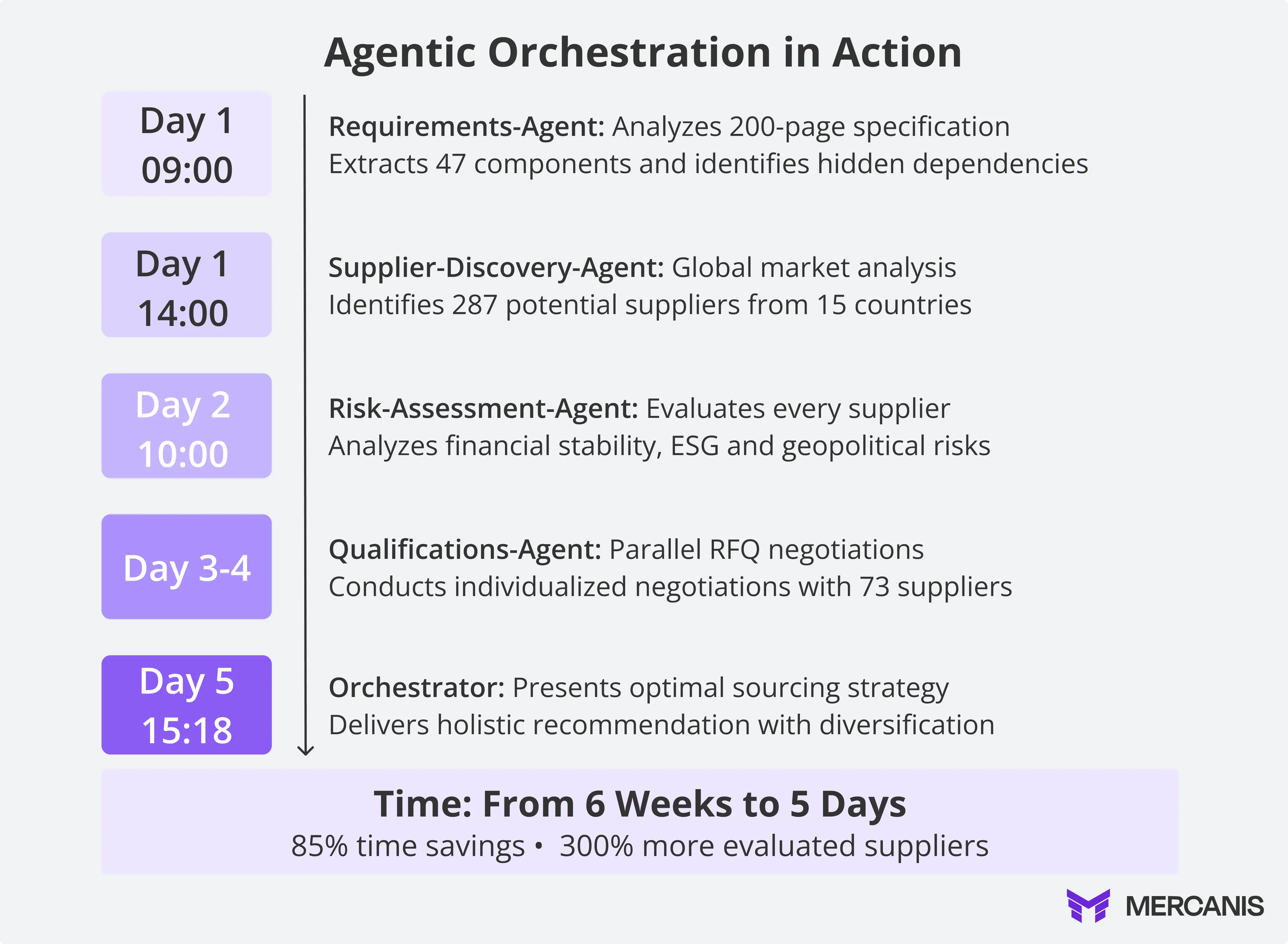
How specialized AI agents are revolutionizing procurement and why individual tools are no longer enough.
Imagine this: A global automotive supplier is facing a critical RFQ challenge. Forty-seven different electronic components need to be procured for a new electric car project, normally a six-week process that ties up three full-time employees and typically ends up 15% over budget. But this time, everything is different: a network of specialized AI agents takes over the orchestration and delivers a complete sourcing strategy with 12 qualified suppliers from 5 countries in just 5 days. The result: 85% time savings, 300% more evaluated suppliers, and 15% better terms, all fully automated.
This story is not a vision of the future, but reality for companies that are already relying on Agentic Orchestration today. But why do so many organizations still fail to derive real value from their AI investments?
While 92% of chief procurement officers (CPOs) worldwide are evaluating GenAI capabilities and planning to invest, only 37% are currently using these technologies in pilot or production, according to a recent Deloitte study. The problem is not a lack of innovation, but a fragmented approach.
Most companies are experimenting with isolated AI applications: chatbots answer simple supplier queries, price forecasting tools optimize individual categories, and spend analytics dashboards deliver reports with limited context. The result is sobering: each solution works in its own silo, data is captured multiple times, insights remain unconnected, and the promised ROI fails to materialize. BCG research shows that 74% of companies struggle to scale measurable value from AI implementations.
Individual AI tools optimize sub-processes, orchestrated AI agents transform entire value chains. Among organizations that successfully use AI in procurement, about 50% report a doubling of ROI compared to traditional methods, with some advanced implementations achieving a fivefold ROI.
AI agents are autonomous software entities that go far beyond traditional automation. They independently pursue goals without constant human instruction, learn from experience, and adapt their strategies accordingly. In addition, they communicate with other agents, exchange information, and make real decisions instead of just providing recommendations.
What makes AI agents special is their ability to think contextually. They not only understand individual data points but also grasp complex relationships and can incorporate them into their decision-making. For example, a procurement agent not only recognizes that a supplier offers favorable prices, but also evaluates its financial stability, geographical risks, sustainability performance, and historical delivery reliability.
Modern AI agents have persistent memory; they do not forget what they have learned and continuously build on their experience. This fundamentally distinguishes them from static rule sets or simple machine learning algorithms. An agent that has developed a successful negotiation strategy with a German machine manufacturer today can apply these insights tomorrow to similar suppliers, considering industry-specific characteristics.
Another key feature is their multimodality: advanced agents can process different types of data simultaneously, from structured ERP data and email communication to market reports, news articles, and even satellite data for supply chain monitoring. This ability to process information holistically enables them to recognize patterns and correlations that often escape human operators.
Classic procurement automation: "If price X is exceeded, send notification Y."
AI agents: "Optimize procurement costs taking into account price trends, supplier risks, compliance requirements, and strategic business objectives, and act accordingly."

Modern procurement juggles a multitude of complex variables: global supply chains encompass over 500 critical suppliers, volatile markets change with hourly price fluctuations, regulatory complexity spans 30 or more countries, and sustainability requirements must take into account over 100 different ESG criteria. Recent analysis from the Deloitte Global Chief Procurement Officer Survey shows a strong correlation between the combination of technology and talent capabilities and better business performance. No single tool can handle this complexity, but specialized agents can.
Spend classification agent: Analyzes and categorizes spending in real time with 99.7% accuracy
Risk monitoring agent: Continuously monitors 15+ risk categories from geopolitical developments to balance sheet ratios
Contract analysis agent: Extracts and evaluates contract clauses, identifies compliance risks and optimization potential
Negotiation agent: Conducts automated negotiations based on market data, historical results, and strategic guidelines

Imagine a hospital operating room: The surgeon focuses on the procedure, the anesthesiologist monitors vital signs, and the surgical coordinator manages the overall process. Everyone is an expert in their field, but only perfect coordination leads to the optimal result.
Agentic Orchestration works according to the same principle: a central orchestrator connects the outputs of specialized agents and coordinates their collaboration.
At the agent level, each agent is an expert in specific tasks such as data collection and preparation, market analysis and price forecasting, supplier evaluation and risk assessment, contract analysis, and compliance checks.
The orchestrator level coordinates the agents and collects and contextualizes all agent outputs. It resolves conflicts between different recommendations, prioritizes actions based on business objectives, and escalates critical decisions to human experts.
Traditional procurement systems require manual data transfer between tools. With Agentic Orchestration, information flows seamlessly:
Result: Real-time decisions instead of weeks of coordination loops.
The context: TechAuto (fictitious name), a Tier 1 automotive supplier based in Stuttgart, is facing a critical challenge. A German premium manufacturer has finalized the specifications for a new electric car model and urgently needs 47 different electronic components, ranging from high-performance capacitors and specialized sensors to customized control units.
The problem: The traditional RFQ process would normally take six weeks, tie up three full-time employees from the purchasing team, and typically end up 15% above the originally calculated target price. With an order volume of €12 million, this would mean additional costs of €1.8 million, not to mention the loss of time in an already tight project schedule.
The expectations: The OEM made it clear: Prototyping must start in 8 weeks, and the supplier list must be finalized in 10 days. At the same time, sustainability targets must be met, compliance risks minimized, and supply security ensured through geographical diversification.
The following timeline shows how orchestrated AI agents reduce this complex 6-week process to 5 days:

The result: While competitors are still caught up in weeks of coordination loops, TechAuto has already made its next strategic decision. The 5-day orchestration not only gives them a head start, it also creates a lasting competitive advantage through:
Requirements agent: Precision instead of interpretation
Traditionally, three buyers would have worked through the 200-page technical specification manually, overlooking important details and developing different interpretations. The AI agent, on the other hand, not only extracts all 47 component specifications without error, but also recognizes hidden dependencies: Component 23 (temperature sensor) must be compatible with component 31 (control unit), a detail that is only mentioned indirectly in the documentation.
Supplier Discovery Agent: Real-time global market intelligence
While human buyers would rely on known supplier lists, the agent systematically searches global databases, chambers of commerce, patent registrations, and even startup accelerator programs. The result: 287 potential suppliers, including 23 innovative newcomers that traditional sourcing approaches would never have discovered.
Risk assessment agent: 18 factors in seconds
Each of the 287 suppliers is evaluated based on 18 criteria: Financial stability (balance sheet data for the last five years), geopolitical situation (trade routes, customs risks), ESG performance (carbon footprint, working conditions), production capacity (satellite data from factories), technology leadership (patent portfolio), and historical performance (delivery reliability records from industry databases).
Qualification agent: Intelligent preselection
From 287 to 73 qualified candidates, but according to what criteria? The agent weights the factors based on TechAuto's strategic priorities: 40% price-performance ratio, 25% supply security, 20% innovation, 15% sustainability. The result: a supplier portfolio that is perfectly aligned with the company's strategy.
Negotiation Agent: Parallel negotiation excellence
41 final offers are generated through parallel but individualized negotiation strategies. The agent uses different levers for each supplier: with established providers, he argues with volume and long-term commitment, with innovative start-ups with reference potential and technology partnerships. At the same time, he plays offers off against each other in a targeted manner, but only to the extent that it makes strategic sense.
The final decision: 12 suppliers from 5 countries for maximum diversification
The decisive difference: While competitors are still caught up in weeks of manual coordination loops, TechAuto is already planning the next product generation. The 5-day AI orchestration has not only saved time, it has created a lasting competitive advantage through better supplier relationships and innovative partnerships.
Procurement leaders expect transformative results from their AI investments: 41% higher efficiency in source-to-pay processes, 49% improvement in touchless invoice processing, 36% better compliance ratings, and 43% improved real-time spend visibility by 2027, according to recent IBM research.
The problem with isolated tools quickly becomes apparent: Tool A optimizes prices but ignores delivery risks. Tool B evaluates supplier performance but is unaware of market developments. Tool C monitors compliance but does not take cost factors into account.
The orchestration advantage, on the other hand, ensures that all factors are incorporated into holistic decision-making. The result is 40-70% higher efficiency gains compared to isolated solutions.
Traditional procurement dashboards show historical values. Orchestrated agents, on the other hand, deliver predictive insights that forecast what will happen in the next 30, 60, or 90 days. They offer prescriptive actions, i.e., concrete recommendations for action, and enable dynamic optimization through continuous adaptation to changing conditions.
According to McKinsey, autonomous category agents can achieve 15 to 30 percent efficiency improvements by automating non-value-added activities.
Orchestrated systems automatically optimize supplier portfolios to minimize risk, geographic distribution to mitigate geopolitical risks, and capacity allocation for maximum supply security.
Phase 1 – Tail spend (0–6 months):
Phase 2 – Strategic categories (6–18 months):
Phase 3 – Enterprise-wide orchestration (18+ months):
The hard truth: 85% of executives cite data quality as their biggest challenge in AI strategies for 2025, according to a KPMG survey.
Critical success factors:
Data harmonization requires standardized supplier master data across all systems, uniform categorization of products and services, and consistent KPI definitions across all business units.
An API-first architecture ensures seamless integration with ERP, CRM, and SCM systems, real-time data flows without manual interfaces, and scalable infrastructure for growing data volumes.
Data quality monitoring includes automated validation of incoming data, anomaly detection for implausible values, and self-healing mechanisms for data errors.
At the strategic level, humans retain complete control. This is where corporate goals and risk parameters are defined, critical supplier partnerships worth millions of dollars are approved, and strategic category decisions are made.
The tactical level is characterized by close human-machine collaboration. Procurement experts monitor agent recommendations, escalate anomalies or threshold violations, and continuously optimize agent parameters based on learning experiences.
At the operational level, over 80% of execution is autonomous. Routine procurement below defined thresholds is fully automated, as are standard supplier communication and automated compliance checks.
Procurement is at a "real turning point" as traditional goals are becoming more difficult to achieve in the face of a multitude of global challenges, according to Deloitte's Global CPO Survey.
The changing roles:
The traditional procurement manager was an operational process manager who manually processed orders. The modern procurement leader, on the other hand, acts as a strategic AI orchestrator who controls intelligent agents, defining strategic goals for autonomous agents, monitoring performance metrics, and continuously optimizing them. They focus on relationship management with key suppliers and drive innovation through data-driven insights.
While the competition is still maintaining Excel lists and sending out manual RFQs, orchestrated AI agents are already making the next strategic decision. BCG analyses show that procurement is ideally positioned to benefit from AI, as it can streamline manual work in key processes by up to 30% and reduce overall costs by around 15% to 45%.
The success factors for 2025 and beyond include the courage to transform, as early adopters will reap disproportionate rewards. Strategic focus means aligning technology investments with business objectives, while continuous learning requires agile adaptation to evolving AI capabilities.
At Mercanis, we understand that the future of procurement does not lie in isolated AI tools, but in intelligently orchestrated systems. Our platform combines an integrated agent architecture in which specialized agents work together seamlessly. It offers end-to-end orchestration from sourcing to contract management in a unified environment and relies on human-centric design, where AI enhances human expertise rather than replacing it.
The next step: Let's work together to assess which of your procurement processes offer the greatest potential for orchestration. The future of procurement is no longer just a vision; it can be realized today.

Traditional automation follows rigid rules such as "if X, then Y" and can only process predefined scenarios. Agentic Orchestration, on the other hand, uses intelligent agents that can make decisions independently, learn from experience, and adapt to new situations. While conventional tools work in isolation, orchestrated agents communicate with each other and optimize holistically – from needs analysis to contract negotiation.

Implementation typically takes place in three phases: Phase 1 (proof of concept) lasts 1-3 months and focuses on simple use cases such as tail spend. Phase 2 (pilot expansion) takes 4-9 months for strategic categories. Phase 3 (enterprise rollout) requires 10-18 months for complete transformation. It is crucial to introduce the solution step by step with quick wins to get the team on board and ensure continuous learning.

High-quality, standardized data is the foundation. Critical factors include uniform supplier master data, consistent product categorization, and harmonized KPI definitions across all systems. The good news is that modern AI agents can work with incomplete data and even clean and enrich it during operation. An 80% data quality standard is often sufficient to get started.

Agentic Orchestration does not replace buyers, but transforms their role. Operational, repetitive tasks are automated, while humans can focus on strategic decisions, supplier relationships, and innovation. The buyer evolves from an operational process manager to a strategic AI orchestrator who controls intelligent agents and generates more value for the company.

Companies that successfully implement Agentic Orchestration report efficiency gains of 40-70% and cost reductions of up to 30% in processed categories. , ROI is typically realized within 6-12 months through time savings, better negotiation outcomes, and reduced process costs. In the long term, additional benefits arise through improved supplier relationships, higher compliance, and strategic insights that open up new business opportunities.




